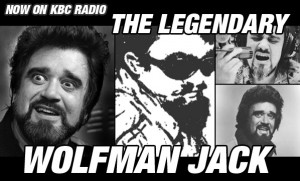The Mighty KBC just announced a change in frequency and time for their next test transmission.
They are now testing on Sunday, October 21st from 00:00 – 02:00 UTC on 9,500 kHz.
Signal reports can be sent to: [email protected]

The Mighty KBC just announced a change in frequency and time for their next test transmission.
They are now testing on Sunday, October 21st from 00:00 – 02:00 UTC on 9,500 kHz.
Signal reports can be sent to: [email protected]
 Last night, I listened to and recorded The Mighty KBC‘s test transmission on 9.4 MHz. The broadcast lasted 2 hours and was quite successful.
Last night, I listened to and recorded The Mighty KBC‘s test transmission on 9.4 MHz. The broadcast lasted 2 hours and was quite successful.
They had a little distortion in the signal for the first half-hour or so, but once that issue was resolved, audio was excellent. This was, after all, a test transmission.
Mind you, I was using the WinRadio Excalibur receiver and a rather large horizontal sky loop antenna–not a portable radio. But based on their signal level as compared with the adjacent Voice of Greece transmission (9.42 MHz), I expect they could have been easily heard on a portable radio here in eastern North America.
If you missed the broadcast, click here to download a full recording or listen below.
Next week: another test broadcast scheduled
Update: Note that The Might KBC will broadcast another test transmission on Sunday 21 September from 00.00 – 02.00 UTC on 9,500 kHz.
This past weekend was the Ten-Tec Hamfest, which is held each year at the Ten-Tec factory in Sevierville, Tennessee, USA. I’m particularly fortunate in that I live within a few hour’s drive of the factory, so I make it a point to attend the Hamfest each year.
Hamfests, for those of you not familiar with them, are basically flea markets or swap-meets for amateur radio operators and radio enthusiasts of all stripes. It’s a place to reunite with hobbyist friends and to trade, sell, or purchase new or used radio equipment. The Ten-Tec Hamfest is free, draws a sizable crowd, and what’s more, attendees get the opportunity to try out Ten-Tec radio equipment and tour the factory where their products are made. The Hamfest also coincides with the annual SEDCO DXer/Contester Conference, which is held in the same town, and begins just as the Hamfest winds down.
This year, I had not intended to buy anything. Still, I’m pleased to admit I bought only one item…

The LS-166/U loudspeaker is built like no other–it’s even gun blast resistant! Its rigid cone is well protected by thick metal screen and mesh.
My purchase: an LS-166/U loudspeaker. This small speaker has been used extensively in military operations around the world. It’s built like a tank, was perhaps mounted in some, but used primarily used in Jeeps, trucks, and on portable radio packs. The case is made of metal and extremely durable. The two watt speaker has a permanent magnet. It is also fungus, gunblast, and immersion resistant: if you drop this speaker, you don’t need to worry about damaging it–rather, you may need to worry about the floor (or your foot).
The really cool thing about this speaker is that it contains an audio transformer that–via a switch on the side–will allow you to chose between a 600 ohm primary and 8 ohm secondary impedance. The speaker sounds crystal clear, even though mine has obviously received extensive usage. That’s the great thing about military gear–it was designed for functionality, often over-engineered, and certainly built to last!
The LS-166/U is not for listening to music–it was designed primarily for radios that require a high impedance load, and for voice audio clarity. If you’re receiving orders over the radio from your commander, the LS-166/U will punch through the noise from your vehicle and surroundings. It sounds “tinny” if used to listen to shortwave broadcasters, but is actually quite effective when used to listen to amateur radio transmissions and morse code. The 300 Hz to 7 kHz frequency response is ideal for this type of application.

The schematic is printed on the inside of this back plate, which is easily removed with a plain head screw driver
The first rig I hooked up the LS-166/U to was my Hammarlund SP-600, which has a 600 ohm output. Though I know I can hook up a larger, more responsive speaker for better fidelity, there is something rewarding about hearing a speaker that has seen so much service being used once again, and still playing as if new.
As you can see from the photo below, mine lacks the knob on the side of the case. I’ll be looking for one of these at the next Hamfest–or may just order one from Fair Radio.
 If you happen to locate the LS-166/U loudspeaker at your local Hamfest, grab one! There are a lot of them floating around and they’re usually quite affordable–typically between $10-20 US (more if mint). I was lucky to pick mine up for $4. Not only is it an affordable piece of military radio history, but I think it would make an excellent external speaker for amateur radio use during outdoor events like Field Day. Indeed, I think this speaker will weather any radio challenge!
If you happen to locate the LS-166/U loudspeaker at your local Hamfest, grab one! There are a lot of them floating around and they’re usually quite affordable–typically between $10-20 US (more if mint). I was lucky to pick mine up for $4. Not only is it an affordable piece of military radio history, but I think it would make an excellent external speaker for amateur radio use during outdoor events like Field Day. Indeed, I think this speaker will weather any radio challenge!
So, what else did I see at the Ten-Tec Hamfest this year? Quite a few classic receivers. Though I didn’t take many photos, I did snap a few gems…

This aluminum radio speaker reminds me of the external speakers found on radios in the early 1900s. The seller had made a custom wooden base for this one (click to enlarge)

If you visit the Ten-Tec factory, tour their radio museum, housing nearly every radio Ten-Tec has produced. One example is the SP-325 (on bottom) a shortwave receiver which once served the US government as a training radio. They’re fairly rare, but can be found occasionally on eBay. (click to enlarge)
 (Source: SWLDX Bulgaria)
(Source: SWLDX Bulgaria)
Pirate radio weekend!
Again, I’m organising a pirate radio event when most of the European and American pirate operators will be on air with their stations, playing music, sending greetings to listeners and having fun! The pirate radio weekend will take place on the 26th and 27th October (Friday and Saturday), as well as on the Sunday morning. I would like as many stations as possible to take part in it.
If you would like to take part in it, just tell me your frequency and time of transmitting, as well as your power and send them to my email: [email protected] ! Thanks in advance.
Regular stations ON AIR:
- 4025kHz – Laser Hot Hits – United Kingdom – 45W
- 6095kHz – The Mighty KBC (Saturday and Sunday afternoons) – 100kW
- 6070kHz – Radio 6150
- 7600kHz – Lightning Radio SW – Hungary – 25W
Stations list:
- Radio True North (69XXkHz, 150XXkHz, 21XXXkHz) – Canada, 200W carrier on all bands below 21MHz, 40W on 21MHz. More information and a concrete schedule will be posted later.
 See if you can catch this test transmission on Sunday, October 7 (oo:00-02:00UTC) from The Mighty KBC in the Netherlands:
See if you can catch this test transmission on Sunday, October 7 (oo:00-02:00UTC) from The Mighty KBC in the Netherlands:
(Source: The Mighty KBC)
The Mighty KBC is testing on 9400 kHz on Sunday, October 7th, 2012 between 00.00 – 02.00 UTC with 100kW beamed to the USA, South America and Canada.
Thanks to Marc for passing along this video which takes you inside Radio Havana Cuba:
 Sad news, indeed: I had hoped that The State We’re In (also known as TSWI) would weather the RNW cuts, perhaps by gaining independent funding. Unfortunately, this doesn’t seem to have been the case, and we’re pained by the loss of yet another stellar international radio program.
Sad news, indeed: I had hoped that The State We’re In (also known as TSWI) would weather the RNW cuts, perhaps by gaining independent funding. Unfortunately, this doesn’t seem to have been the case, and we’re pained by the loss of yet another stellar international radio program.
[UPDATE – 23 Oct 2013: TSWI will be produced as a podcast via WBEZ, starting November 2013]
In my opinion, The State We’re In represents some of the best radio documentary out there: TSWI has won international honors, including three New York World Medals in 2010, as well as a Gabriel. Ira Glass, the talented host of Chicago Public Media’s This American Life, has praised TSWI for its “amazing editorial judgment,” and Glass rightly called TSWI host Jonathan Groubert “one of the best news interviewers on public radio today.”
Don’t believe me? Listen to some of their archived shows, like Two Enemies, One Heart. Powerful stuff.
I hold out hope that, somehow, TSWI will find the funding to revive. We simply cannot (and should not!) allow a show if this caliber to dissolve for twelve million listeners across our planet…
(Source: TSWI on Facebook)
We have some bad news:
The State We’re In is being terminated. As many of you may know, Radio Netherlands Worldwide was hit with a drastic 70% cutback last year by the Dutch government. We were assured at that time by Radio Netherlands’ outgoing management that the show was still going to be an integral part of Radio Netherlands, but those assurances didn’t hold.
Subsequent changes in the organization’s mandate towards a tighter focus on nations in the developing world, and a much slower-than-expected transition to new management have made it impossible for us to continue. The State We’re In exits with its head held high: it was the most broadcasted, downloaded and decorated program in the long history of Radio Netherlands, and won praise from radio industry leaders from around the world.
It was heard in top public radio markets the United States, Canada, Australia, Ireland, and in select markets in India and Africa. Our overall audience reach was 12 million people. We will miss you and all the engaged, thoughtful responses you had to what we put on the air. It was a privilege bringing these stories — which sometimes included stories you told us — to light.
FYI: Our last original program will be produced at the end of October. There will be some repeat shows after that.
Greg Kelly, Editor, TSWI